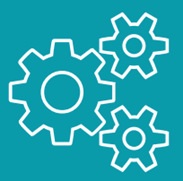Design Technology

|
Intent |
|
Our Design Technology curriculum aims to inspire pupils to be innovative and creative thinkers who have an appreciated for the product design cycle through ideation, creation, and evaluation. We want pupils to develop the confidence to take risks, through drafting design concepts, modelling, and testing and to be reflective learners who evaluate their work and the work of others. We aim to build an awareness of the impact of design and technology on our lives and encourage pupils to become resourceful, enterprising citizens who will have the skills to contribute to future design advancements. Our Design Technology Curriculum works to ensure children meet the end of Key Stage attainment targets. |
|
Implementation |
|
Our Design Technology curriculum outlines the three main stages of the design process; design, make, evaluate. Each stage of the design process is underpinned by technical knowledge which encompasses the contextual, historical, and technical understanding required for each strand. Cooking and nutrition, as a separate unit, with a focus on specific principles, skills and techniques in food including where food comes from, diet and seasonality. Our Design Technology children respond to design briefs and scenarios that require consideration of the needs to others, developing their skills in six key areas: -
Each of our key areas follows the design, make, and evaluate process. The curriculum is a spiral curriculum, with key areas revisited again and again with increasing complexity, allowing pupils to revisit, and building on their previous learning. Lessons incorporate a range of teaching strategies from independent tasks, paired and group work including practical hands-on, computer-based, and inventive tasks. This variety means that lessons are engaging and appeal to those with a variety of learning styles. Knowledge organisers for each unit support children in building a base of knowledge in recalling key facts and vocabulary. Strong subject knowledge is vital to be able to deliver a high-quality Design and Technology Curriculum. We have a clear cycle of CPD for staff to ensure that they feel fully skilled to deliver our Design and Technology Curriculum. Lessons are timetabled in unit blocks to ensure that learning is closely connected and that children can immerse themselves in their Design Technology learning. We have a dedicated and well-resourced Design Technology room where all lessons take place. |
|
Impact |
|
The impact of our Design and Technology curriculum is constantly monitored through assessment, learning walks and pupil discussions. Each unit is assessed against key learning aims. Children will leave our school equipped with a range of skills to enable them to succeed in their secondary education and be an innovative and resourceful member of society. Overall, we intend that the impact of our Design and Technology curriculum is that children will: -
|
